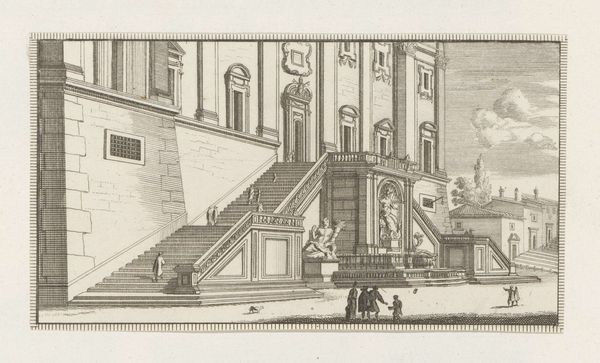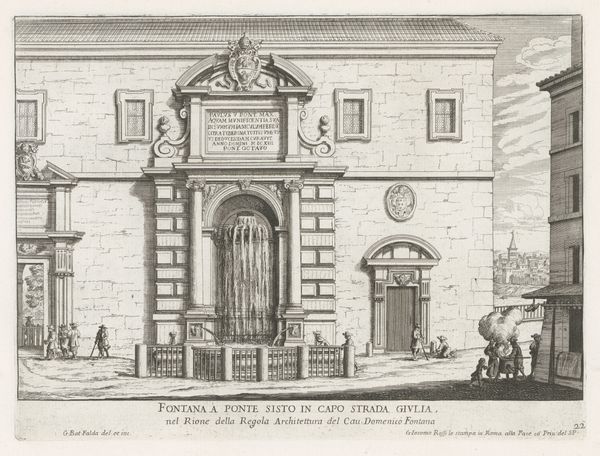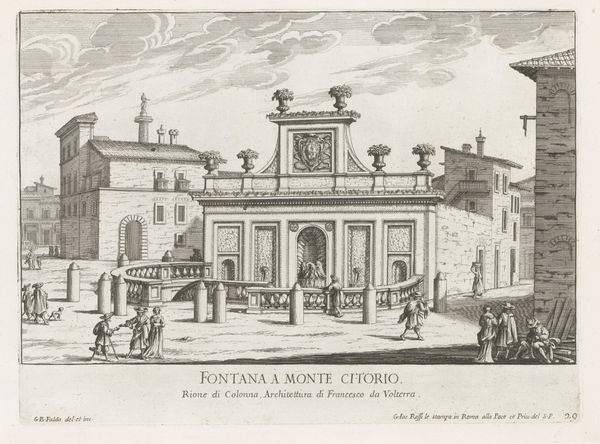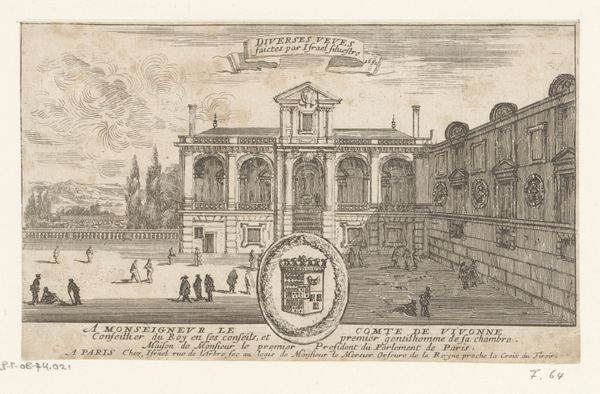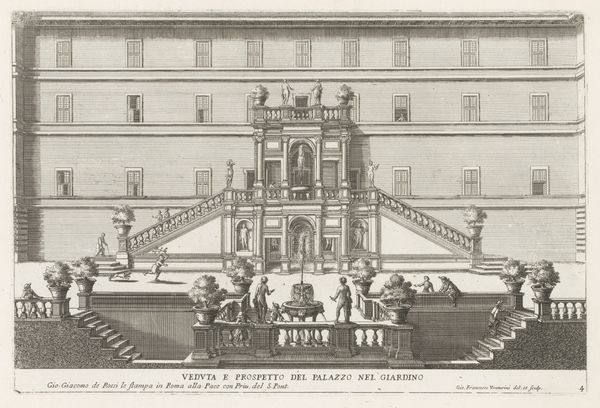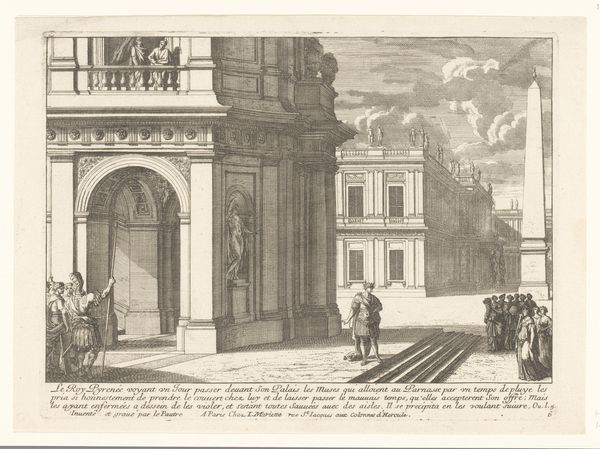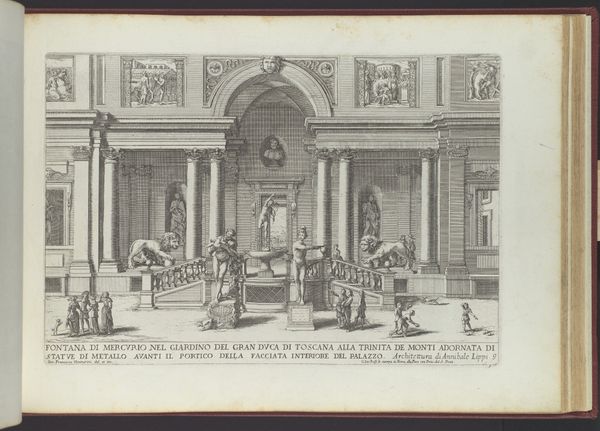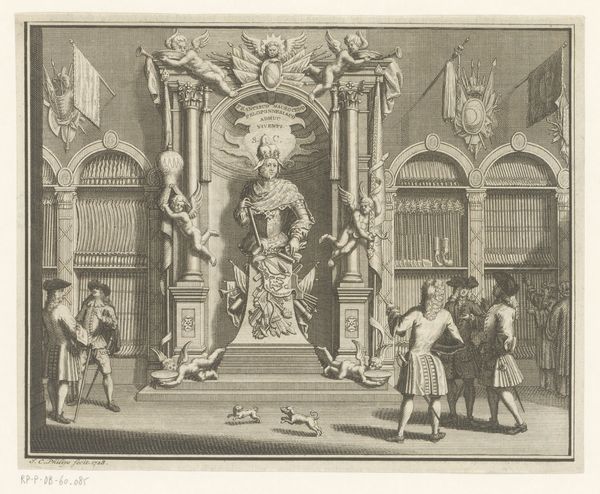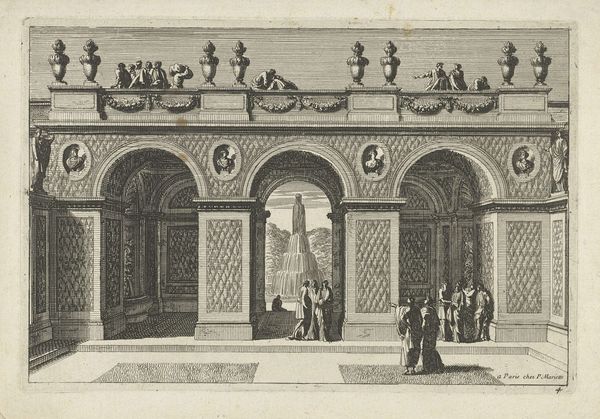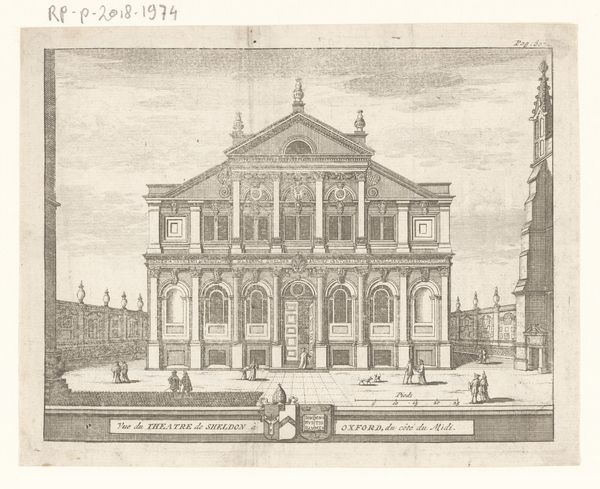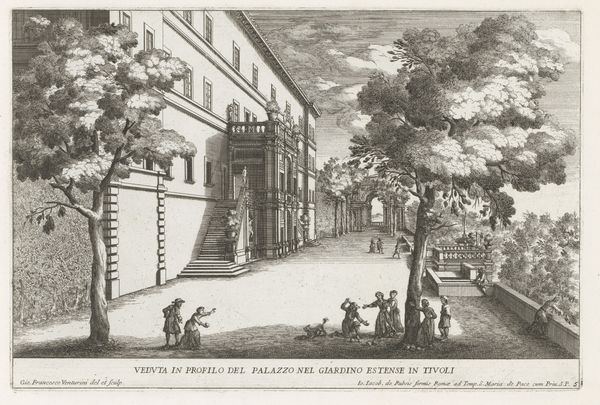
Fontein voor het Palazzo Senatorio op het Capitool te Rome 1653 - 1691
0:00
0:00
giovannibattistafalda
Rijksmuseum
engraving, architecture
#
baroque
#
cityscape
#
italian-renaissance
#
engraving
#
architecture
Dimensions: height 218 mm, width 293 mm
Copyright: Rijks Museum: Open Domain
This engraving of the fountain in front of the Palazzo Senatorio in Rome was made by Giovanni Battista Falda in the second half of the 17th century. Falda’s image invites us to consider the public role of art and architecture in shaping civic identity. The fountain sits at the base of the Capitoline Hill, a site of ancient Roman power, redesigned by Michelangelo in the 16th century. Note the monumental scale, classical references, and how the figures are arranged. These visual codes project an image of Roman authority, linking the city's present to its glorious past. This wasn’t just about aesthetics; it was a political statement. In a time when the Catholic Church sought to reassert its dominance, art became a powerful tool for propaganda. The Capitoline Hill project, overseen by powerful families and institutions, aimed to impress both locals and visitors with Rome’s enduring power. To understand this artwork better, we need to delve into the history of Rome’s urban development, papal patronage, and the role of artists as agents of power. Only then can we fully appreciate the complex interplay of art, politics, and society in Falda's Rome.
Comments
No comments
Be the first to comment and join the conversation on the ultimate creative platform.
